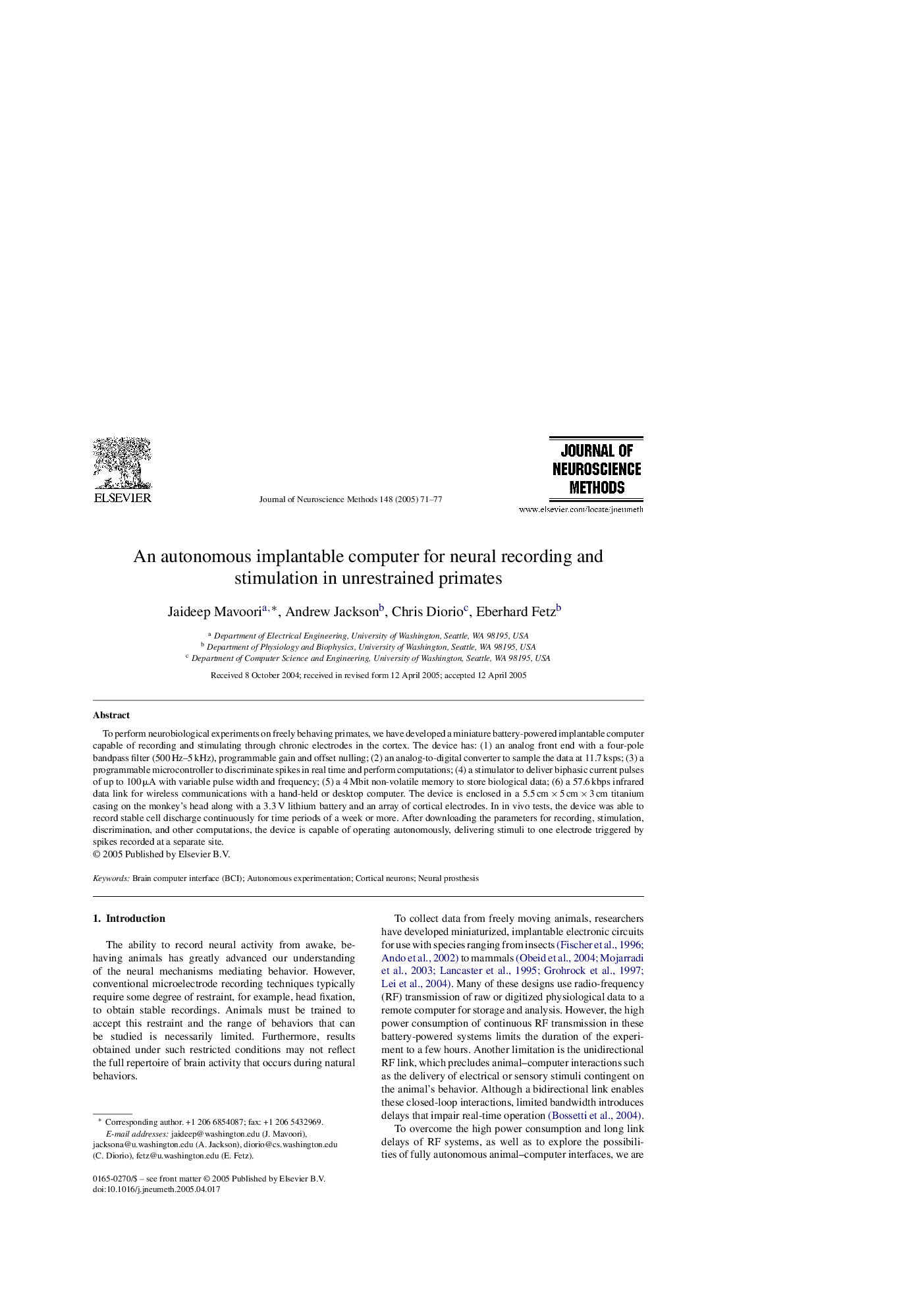| Article ID | Journal | Published Year | Pages | File Type |
|---|---|---|---|---|
| 9424098 | Journal of Neuroscience Methods | 2005 | 7 Pages |
Abstract
To perform neurobiological experiments on freely behaving primates, we have developed a miniature battery-powered implantable computer capable of recording and stimulating through chronic electrodes in the cortex. The device has: (1) an analog front end with a four-pole bandpass filter (500âHz-5âkHz), programmable gain and offset nulling; (2) an analog-to-digital converter to sample the data at 11.7âksps; (3) a programmable microcontroller to discriminate spikes in real time and perform computations; (4) a stimulator to deliver biphasic current pulses of up to 100âμ A with variable pulse width and frequency; (5) a 4âMbit non-volatile memory to store biological data; (6) a 57.6âkbps infrared data link for wireless communications with a hand-held or desktop computer. The device is enclosed in a 5.5âcmâà â5âcmâà â3âcm titanium casing on the monkey's head along with a 3.3âV lithium battery and an array of cortical electrodes. In in vivo tests, the device was able to record stable cell discharge continuously for time periods of a week or more. After downloading the parameters for recording, stimulation, discrimination, and other computations, the device is capable of operating autonomously, delivering stimuli to one electrode triggered by spikes recorded at a separate site.
Related Topics
Life Sciences
Neuroscience
Neuroscience (General)
Authors
Jaideep Mavoori, Andrew Jackson, Chris Diorio, Eberhard Fetz,
